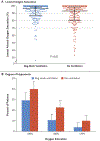Bag-Mask Ventilation during Tracheal Intubation of Critically Ill Adults
- PMID: 30779528
- PMCID: PMC6423976
- DOI: 10.1056/NEJMoa1812405
Bag-Mask Ventilation during Tracheal Intubation of Critically Ill Adults
Abstract
Background: Hypoxemia is the most common complication during tracheal intubation of critically ill adults and may increase the risk of cardiac arrest and death. Whether positive-pressure ventilation with a bag-mask device (bag-mask ventilation) during tracheal intubation of critically ill adults prevents hypoxemia without increasing the risk of aspiration remains controversial.
Methods: In a multicenter, randomized trial conducted in seven intensive care units in the United States, we randomly assigned adults undergoing tracheal intubation to receive either ventilation with a bag-mask device or no ventilation between induction and laryngoscopy. The primary outcome was the lowest oxygen saturation observed during the interval between induction and 2 minutes after tracheal intubation. The secondary outcome was the incidence of severe hypoxemia, defined as an oxygen saturation of less than 80%.
Results: Among the 401 patients enrolled, the median lowest oxygen saturation was 96% (interquartile range, 87 to 99) in the bag-mask ventilation group and 93% (interquartile range, 81 to 99) in the no-ventilation group (P = 0.01). A total of 21 patients (10.9%) in the bag-mask ventilation group had severe hypoxemia, as compared with 45 patients (22.8%) in the no-ventilation group (relative risk, 0.48; 95% confidence interval [CI], 0.30 to 0.77). Operator-reported aspiration occurred during 2.5% of intubations in the bag-mask ventilation group and during 4.0% in the no-ventilation group (P = 0.41). The incidence of new opacity on chest radiography in the 48 hours after tracheal intubation was 16.4% and 14.8%, respectively (P = 0.73).
Conclusions: Among critically ill adults undergoing tracheal intubation, patients receiving bag-mask ventilation had higher oxygen saturations and a lower incidence of severe hypoxemia than those receiving no ventilation. (Funded by Vanderbilt Institute for Clinical and Translational Research and others; PreVent ClinicalTrials.gov number, NCT03026322.).
Copyright © 2019 Massachusetts Medical Society.
Figures


Comment in
-
Preventing Dogma from Driving Practice.N Engl J Med. 2019 Feb 28;380(9):870-871. doi: 10.1056/NEJMe1900708. Epub 2019 Feb 18. N Engl J Med. 2019. PMID: 30779527 No abstract available.
-
[Is bag-mask ventilation before endotracheal intubation in intensive care patients useful?].Med Klin Intensivmed Notfmed. 2019 Nov;114(8):749-751. doi: 10.1007/s00063-019-0577-4. Epub 2019 Apr 3. Med Klin Intensivmed Notfmed. 2019. PMID: 30944944 German. No abstract available.
-
Bag-Mask Ventilation during Tracheal Intubation of Critically Ill Adults.N Engl J Med. 2019 Jun 20;380(25):2480. doi: 10.1056/NEJMc1905226. N Engl J Med. 2019. PMID: 31216406 No abstract available.
-
Bag-Mask Ventilation during Tracheal Intubation of Critically Ill Adults.N Engl J Med. 2019 Jun 20;380(25):2480-2481. doi: 10.1056/NEJMc1905226. N Engl J Med. 2019. PMID: 31216407 No abstract available.
-
Bag-Mask Ventilation during Tracheal Intubation of Critically Ill Adults.N Engl J Med. 2019 Jun 20;380(25):2481. doi: 10.1056/NEJMc1905226. N Engl J Med. 2019. PMID: 31216408 No abstract available.
-
Bag-Mask Ventilation during Tracheal Intubation of Critically Ill Adults.N Engl J Med. 2019 Jun 20;380(25):2481-2482. doi: 10.1056/NEJMc1905226. N Engl J Med. 2019. PMID: 31216409 No abstract available.
-
Does bag-mask ventilation between induction and laryngoscopy reduce the incidence of hypoxemia during intubation of critically ill patients?CJEM. 2019 Nov;21(6):713-714. doi: 10.1017/cem.2019.384. CJEM. 2019. PMID: 31379317 No abstract available.
-
Periintubation Ventilation and Oxygenation of Acutely Ill Patients.Am J Respir Crit Care Med. 2020 Apr 1;201(7):856-858. doi: 10.1164/rccm.201904-0904RR. Am J Respir Crit Care Med. 2020. PMID: 32027808 No abstract available.
References
-
- Pfuntner A, Wier LM, Stocks C. Most frequent procedures performed in U.S. hospitals, 2011: statistical brief #165 In: Healthcare Cost and Utilization Project (HCUP) statistical briefs. Rockville, MD: Agency for Healthcare Research and Quality, 2013. (http://www.ncbi.nlm.nih.gov/books/NBK174682/). - PubMed
Publication types
MeSH terms
Substances
Associated data
Grants and funding
LinkOut - more resources
Full Text Sources
Other Literature Sources
Medical
